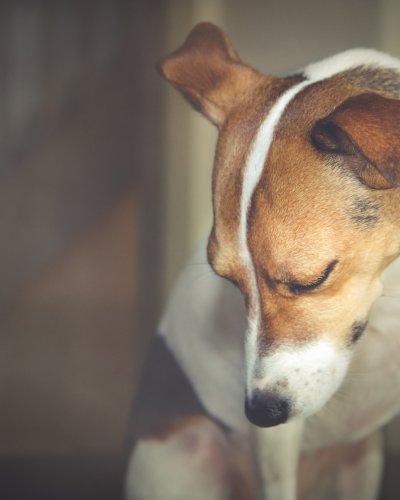Is My Dog Over Weight?
As cute as chubby dogs might be to some, excess weight can cause serious problems. Overweight dogs face an increased risk of developing disease, reduced energy for daily activities, and an expectedly reduced lifespan. Therefore, a timely reaction and determination are needed to make the dog fit and regain a healthy weight.
Overweight or Obese—What Exactly Defines It?
Excess weight or obesity is a condition that appears due to the accumulation of body fat. Often appearing gradually, this accumulated body fat increases the dog's weight and volume and, if left unchecked, leads to the dog becoming overweight or obese.
Once a dog is 10-15% above its recommended body weight, we can describe it as overweight. Obesity occurs when a dog weighs 20% more than the recommended body weight. However, knowing your dog's baseline ideal weight is necessary for owners to determine if they are overweight from scales.
Often, it is more useful for owners to learn to identify their dog's weight with a weight chart. By using the chart below, owners can learn to use their hands and eyes to identify weight issues in their canine companions.
What score would you give your dog?

What Factors Influence Obesity?
Some dog breeds are more prone to accumulating body fat and having excess weight issues. However, that's not an excuse to allow a dog to become overweight; instead, it is essential information that should lead to greater caution and earlier interventions so that these dogs don't become obese. For example, these breeds are more prone to obesity and excess weight: Golden Retrievers, Bulldogs and Cocker Spaniels.
Yet, a dog breed will never be the only factor that leads to obesity. Chronic overfeeding or overeating, combined with a lack of activity, are environmental factors that can harm dogs' health.
In addition to how much a dog eats, what they eat also plays a vital role in how their bodies respond. We recommend speaking to a qualified Canine Nutritionist who can advise on feeding nutrient-rich feeds to your dog, helping to ensure their bodies are getting enough of everything they need.
Although it may seem that chubby dogs are cute to some, this condition is disastrous for their overall well-being.
How to Tell if My Dog is Overweight?

Owners can readily learn to assess their dog's weight using the chart above. If you suspect your dog might be carrying a little or a lot of excess weight, then it is prudent to book a check-up with your veterinarian to discuss the safety of changing or adapting your dog's diet and increasing their activity level.
The signs that could lead you to conclude that your dog is on the way to obesity can be noticed quite early and without a professional examination, regardless of the dog's breed.
Feel Your Dog's Ribs
When you run your hands over the rib area of your dog, you should be able to feel bumps where the ribs are. Ask yourself if you can feel a layer of fat covering them. Are the ribs easy to feel, or do you struggle to find them due to a thick layer of fat covering them? It's similar to the experience of touching the top of your hand—you feel the bone structure but not the fatty tissue. That should be the case with a dog of ideal body weight, regardless of breed and coat.
Observe Your Dog's Abdomen
A tuck-up must be noticeable when you look at the dog from the side, and a tuck-in or waist is seen from above. This means that the abdominal space must be visibly narrower than your dog's chest.
In overweight dogs, their waistline disappears, and they have a straighter appearance through the chest and abdominal areas from above, and the abdomen begins to get lower.
Lower Energy Levels in Dogs

One of the first signs that your dog is struggling with excess weight can be reduced energy. Overweight dogs will show this through a greater desire to rest and sleep, panting when walking, or walking more slowly and disinterestedly than they should at their age. However, remember that other illnesses can also lead to energy loss, so if your dog seems sluggish, it's best to take them to your vet for an examination.
What Are the Risks Associated with Canine Obesity?
For a long time, fat was considered an inactive tissue with no effect on the body except that it stores excess calories and increases body mass. But more recent and systematic scientific research has come to a completely different conclusion—fat has a very active effect on dogs' health. Obesity is now viewed as a chronic inflammatory condition because it secretes inflammatory hormones that create stress in the body, contribute to the development of numerous diseases, and drastically reduce the lifespan of a dog.
Moreover, science has proven that the influence of excess weight on the length of a dog's life is surprisingly high, and not only in cases where the dog is already obese. Even moderately overweight dogs have a life expectancy reduced by almost two years compared to their fit canine friends.
All this is related to the development of diseases that excess weight brings. Some of them are:
Diabetes
Skin problems
Heart problems
High blood pressure
Joint problems
Arthritis
Mobility issues
Certain types of cancer
Liver problems
Kidney disease
Breathing problems.
Although obesity is equally risky for all dog breeds, some dogs, due to their structure, have a hard time bearing the pressure that excess weight creates in their body. For example, breeds like Dachshunds can develop severe back problems. In contrast, brachycephalic dog breeds that already struggle with breathing problems can experience additional complications due to obesity, which can be fatal.
At the same time, it should be kept in mind that unexplained body weight gain can be a sign of a severe illness. Some diseases caused by the accumulation of excess weight are hypothyroidism (an underactive thyroid gland) or Cushing's disease (overactive adrenal glands). Therefore, paying attention to excess weight and visiting the veterinarian or canine specialist on time is essential.
How to Help an Overweight Dog?

The first step should be a trip to your veterinarian, ensuring they rule out the possibility of underlying illnesses that could cause or contribute to your dog's excess weight.
Next, we recommend that you consult with a qualified Canine Nutritionist to have a custom diet plan written up for your dog to help them on their weight loss journey. And, if your dog was medically cleared to exercise, you can contact a Canine Fitness Professional, who will help you devise an exercise plan suitable for your dog.
The changes in your dog's body require persistence and will likely take time and dedication on your behalf. This time that you spend lovingly preparing meals for your dog and working with them doesn't just have a positive effect on their body; it will also positively impact their emotions as they form a deeper bond with you.
Diet
Depending on your dog's age, breed and size, your Canine Nutritionist will calculate the ideal daily calorie intake and the amount of calories to provide your dog with at each meal. High-nutrient but low-calorie food may be needed initially for the dog to lose the accumulated fat, after which, the newly gained dog's weight will only need to be maintained.
You may also be advised to create a routine of feeding your dog at the same time each day, as this will help in reaching your goal faster.
Carrying extra weight is stressful for a dog's body, and adding nutritional supplements like Antinol, a natural-based supplement, will help strengthen the joints and reduce the impact of inflammation in the body of an obese dog.
Exercise

A modified diet will reduce fat deposits, but a dog that has struggled with excess weight needs strengthening of muscle mass to support the body and aerobic activity to improve the efficiency of their cardiovascular system.
Walking and outdoor play are important aspects of physical and emotional well-being - regardless of size or breed. We have already mentioned some great outdoor games and canine fitness equipment. By devising a plan specific for your dog, you can ensure they are getting the best. Jumping too quickly into an exercise plan that is too challenging for your dog can lead to injuries or greater stress on the body. So, talk to your canine fitness trainer about what is suitable for your dog.
Regular Visits to the Vet
Visits to your veterinary clinic should be a regular, annual activity in caring for your dog. That way, you will be able to detect early signs of the development of a disease and take a responsible step towards pet obesity prevention.





Leave a comment